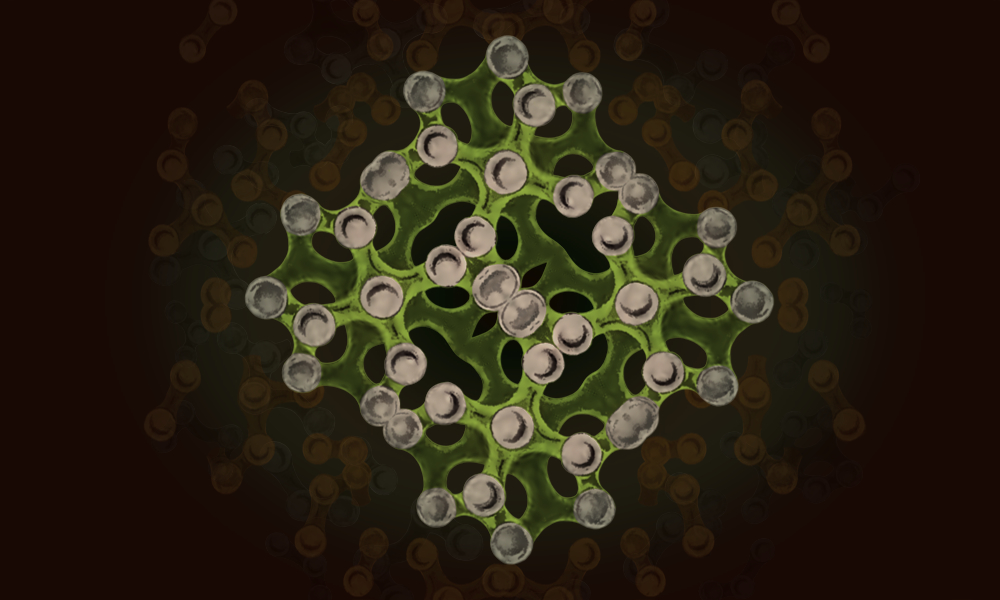Meditation as Emergent Coherence at Criticality
The grand cumulative trance of being alive

What we achieve in meditation is not hallucination in the usual sense, but rather these "alternative states of consciousness" are byproducts of emergent coherence at criticality: this coherence does not exist outside the immediate functioning of each respective neural system, and is therefore "subjective", ephemeral, and difficult to formulate as all emergence is. The meditative art yields to statespace mapping and power-law estimation, rather than reductive formulae. It is a nonlinear miracle of a vast topological network, and therefore is not "in" the physiology outside of its critical moments - subjective experience cannot be discovered via vivisection: this is why it has not yielded to the typical brutality of 20th century medicine, which generally believes in nothing until it's splayed out on the laboratory table. But there are signs this is changing: neuroscience has been creeping up on nonlinearities with increasing assurance, and it's time that we spiritual practitioners caught up.
Modulation of the nervous system would be a relatively trivial exercise, and perhaps just as self-indulgent as the detractors of meditation might wish, if the sole function of the neural network was to generate immediate experience - as though that were an end in itself! The body would not perpetuate such lavish energetic expenditures without good reason. Subjectivity, affect, a sense of being-in-the-world, has discernible and exploitable function just like everything else in biological systems: the nervous system coordinates, regulates, and navigates. Therefore when we meditate, we are adjusting and refining the primary short-term regulatory system of the body: we use selective feedback to modulate this "subjectivity generating" feedback system which modulates many other systems in turn. This is why meditative discipline has the power to change your life entire. Keep in mind that we are much more than merely the epiphenomena of the nervous system - to say nothing of modernity's habit of placing all personhood solely in the brain, and sometimes only the cortex.
Meditation is therefore the exploitation of the side-effects of extremely short-term emergent coherence within a system which itself has a short-term regulatory role situated within longer-term systems - such as the digestive, the immune, the hormonal, or the skeletal-muscular systems. Every time we successfully meditate, we leave traces of emergent coherence which latent neural function becomes more likely to follow: often it is only a few seconds of novel configuration within a 30 minute session which represents our progress - but due to enduring neuroplasticity, it is enough. This is why meditative practice deepens and evolves over the years, as we eventually need it less and yet also learn to exploit it more.
The regulatory leverage of the nervous system also helps explain why we seem to gain in overall health through steady practice: our digestion becomes more regular, our immune system kicks ass, we sleep better, et cetera. Much of what it means to be healthy amounts to rapid and distinct transitions between activation and rest: nothing characterizes the chronic illness of the modern body like endless low-level inflammation - always half in, half out. Always lazy, never restful. Always wary, never awake. Always craving, never hungry. Always irritated, never enraged. Always smirking, never joyful.
I frequently use the word "coherence" when speaking of meditation: why? In acoustical analysis, coherence means rational waveform, constructive interference, and implies a musical relationship. So much of what is wrong with us is a result of incoherent interference between systems which should properly nest one inside the other, overlap, and mutually reinforce - resonance is a symptom of health. Microscale coherences such as we create in meditation have the power to engender macroscale systemic coherence - just as for example, rigorous daily routine and regularity of diet are part of the recipe of maximum human development.
What are these "microscale coherences" I'm speaking of? Partly they are artifacts of sensory processing: in other words, the almost incessant liminal hallucinations and probable errors normally inhibited, blurred, and "lowpass filtered". Because of the stillness and deprivation of meditative practice, these processing artifacts surface in a way vaguely analogous to what happens in psychedelic experience through more forceful chemical means. Tinnitus, for example, is both the result of a sudden loss of input and too high a gain in the noise component added to achieve stochastic resonance in the elaborate resolution functions of our hearing. It may go by many other names in the history of spirituality, but the neural noise I'm speaking of, which when constrained and thus amplified through nonlinear effects, is a kind of "apperceptive neural tinnitus": apperceptive consciousness in combination with the modulation of breath control has the capacity to locally excite this latent stochastic static and force a subset of the neural network to undergo a phase shift to some other stable limit cycle. In the past, this latent stochastic noise and the control of its emergent properties would have been called "qi", or "kundalini". As far as we can tell, most of these emergent orders are extremely transitory and difficult to reproduce: however we all have our accustomed tricks and preferential means of trance.
The point is that we are not merely playing with ourselves and inducing useless hallucinations: forcing the system to proceed through successive coherences such that it effectively explores its own harmonics and optimization gradient, not only leaves behind traces in the system such that it becomes more likely to produce the same coherences in the future, but it also tends to induce novel reparative subroutines dependent on these higher dissipative states. Parallels in complex biological systems are not difficult to find: such as what happens when you force a heavy smoker to undergo a strenuous hike until they vomit, and find a surprising willingness to keep going. "Second wind" is another way of saying "dependent subroutine", and there are many such modes of the stronger body latent and waiting: most of us do not know half of what our body can do. Much of what occurs in the early stage of meditation is the analog of puking your guts out: I know a woman who during the first year of her practice, would take five minutes to reach a certain meditative state and then spend the next hour weeping. She would exit this practice clean as a whistle and supremely receptive.
Actually hallucinatory control and self-induced trance is not at all unusual: even the most sedated and addicted modern human body glides without much trouble between various forms of trance. Everyone you know is adept at producing at least one kind of trance: the difference is the monotony and compulsion involved. But in the language of neurophysics, what is trance? It is sustained inhibition of an otherwise dominant mode or affect cycle, such that latent responses have a chance to develop and reach expression. This is analogous to the tranquility needed in the confabulation cycle needed to produce novel ideation: in a healthy system it is the moment of eureka, epiphany - stopping mid-sentence and staring into the distance with a gleaming eye. However this kind of broadband inhibition tends to also be the signature of the coping entrancements of modernity: this is why everyone seems like a zombie, shut down, half dead. It is also the reason why the masterful hypnotist Milton Erickson, for example, generally found it necessary to jolt the subject awake first, in order to induce some other more productive trance: therefore meditation is not "zoning out", not "checking out", not essentially escapist - although I'm well aware that it's been abused as such, and even advertised as such for millennia. Meditation in our hands becomes a weapon against escapist monotonous trance: we learn to proceed through our phase shifts ever more fluidly, ever more rapidly, we learn to feel our feelings more deeply, more passionately, more committedly. The grand cumulative trance of being alive: that's the bigtop under which all these exercises should spin. We are more sober than anyone, and simultaneously more intoxicated than anyone with the elixirs of life. We're raucously drunk at the fourway marriage of O, C, N, and H.
Hypnosis is generally achieved as the inhibition of executive centers through the medium of social authority. Most of humanity is so suggestible because it is socially desperate. In addition, the more alienation and an impending sense of abandonment looms, the more willing the tribal creature becomes to suspend executive function for the sake of inclusion at any cost. Those familiar with my previous work will know this. But those destined for the most profound meditative practice, are usually immune to such means of hypnosis: we don't meditate because the Buddha wants us to, or because the sangha is watching, or because we expect to find an approving godhead at the end of that tunnel - or any other form of moral prostration.
Yet we induce trance in ourselves: how? Partly through this same function of authority. It's possible that what's meant by "willpower" is nothing other than this same tribal authoritarian hypnosis applied in a reflexive mode: we obey ourselves. Generally the most willful human creatures are not happy until they are dominated by something tyrannical: some nearly impossible task, some great ambition, perhaps a lost cause, or a great love. And while setting the intention to meditate is extremely important, and investigating the means of establishing a challenge-and-reward schema relative to the practice is vital - you have to want to do it - this is rather the longterm profile of a meditative practice. Something else occurs in the immediate inducement of trance. I'll skip to the end give away the answer: it's about the ability to say no. Trance is conditioned by massive systemic inhibition. Therefore the cultivation of attitudes of withholding, rejection, and a slow affect is vital to the development of a meditative practice. The wrathful deities have been considered useful because wrath is useful for the generation of containment and neural inhibition necessary to induce deep trance. It's not just so that we can overcome anger, but to exploit it. Everything has a place at our table, because we seek to be complete human creatures, and because our discipline is beyond good and evil.


